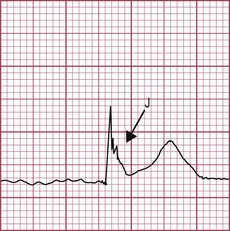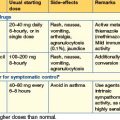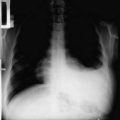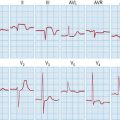19 Environmental medicine
Heat
Cold
Hypothermia
Diagnosis
Bradycardia with ‘J’ waves (rounded waves above the isoelectric line at the junction of the QRS complex and ST segment (Fig. 19.1)) is pathognomonic of hypothermia. Prolongation of PR and QT intervals and of the QRS complex also occurs. Ventricular dysrhythmia (tachycardia/fibrillation) or asystole is the usual cause of death.
Management
Maintain the patient in a horizontal position or slightly head-down, rewarm gradually, correct metabolic abnormalities, anticipate and treat dysrhythmias, and check for hypothyroidism (p. 570).
In severe hypothermia, people look dead. Always exclude hypothermia before diagnosing brainstem death (p. 561). Warm gradually, aiming at an increase in TCore of 1°C per hour. Direct mild surface heat can be helpful. Monitor all vital functions.
Drowning and near-drowning
Wet drowning
Fresh- or sea-water aspiration destroys pulmonary surfactant, leading to alveolar collapse, ventilation/perfusion mismatch and hypoxaemia. Aspiration of hypertonic seawater (5% NaCl) pulls additional fluid into the alveoli with further ventilation/perfusion mismatch. In practice, there is little difference between salt-water and fresh-water aspiration. In both, severe hypoxaemia develops rapidly. Severe metabolic acidosis develops in the majority of survivors.
Ionizing radiation
Acute radiation sickness
Late effects of radiation exposure
For the sequelae of therapeutic radiation — early, early-delayed and late-delayed radiation — see p. 256).
Electric shock
Bioterrorism/biowarfare
Potential pathogens
The US Centers for Disease Control in Atlanta, Georgia, have developed a classification of potential biological agents (Table 19.1).
| Category | Pathogens |
|---|---|
| A — Very infectious and/or readily disseminated organisms: high mortality with a major impact on public health | Smallpox, anthrax, botulism, plague |
| B — Moderately easy to disseminate organisms causing moderate morbidity and mortality | Q fever, brucellosis, glanders, food-/water-borne pathogens, influenza |
| C — Emerging and possible genetically engineered pathogens | Viral haemorrhagic fevers, encephalitis viruses, drug-resistant TB |
(From Khan AS, et al 2000, with permission)
Buchler JW, Berkelman RL, Hartley DM. Syndromic surveillance and bioterrorism-related epidemics. Emerg Infect Dis. 2003;10:1197-1204.
Khan AS, Morse S, Lillibridge S. Public-health preparedness for biological terrorism in the USA. Lancet. 2000;356:1179-1182.
Lazar HL. Editorial: The treatment of hypothermia. New Engl J Med. 1997;337:1545-1547.







